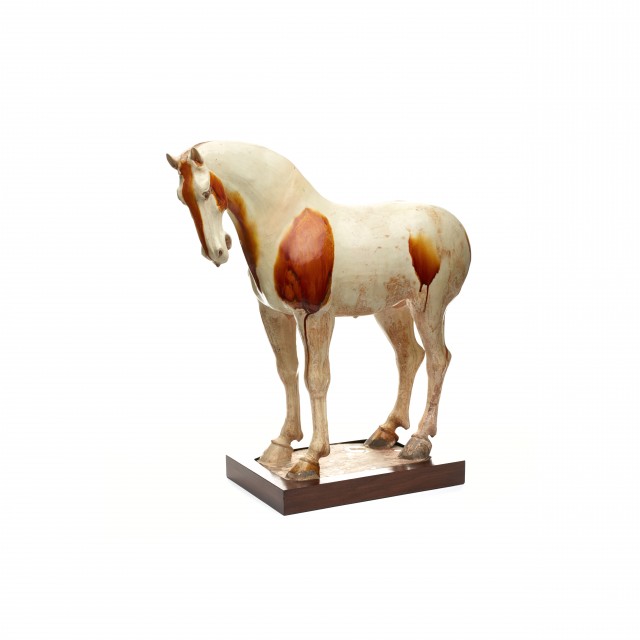
Horse

Photography by Synthescape, Digital image © Asia Society
Horse
Early 8th century
North China
Earthenware with multicolored lead glazes (sancai ware)
H. 23 x L. 24 1/4 x W. 8 in. (58.4 x 61.6 x 20.3 cm)
Asia Society, New York: Estate of Blanchette Hooker Rockefeller, 1992.1
Licensing inquiries
Lively horses standing in a wide array of poses are among the most famous examples of Tang-dynasty three-color or sancai wares. Horses were an important part of the funerary regalia of high-ranking officials and members of the imperial family. This unadorned horse that also lacks a tail and a mane illustrates a type of horse that appears to have been made during the early decades of the 8th century. Unlike the more colorful version of the sancai glazes used in making Tang horses that have saddlery, the coloring of this horse is very subtle, consisting of a cream body with amber-brown markings. It has been suggested that the tails and manes of horses of this type were made of perishable material such as hair, while their saddles, bridles, and other fittings may have been made of bronze or even some more precious metal.

